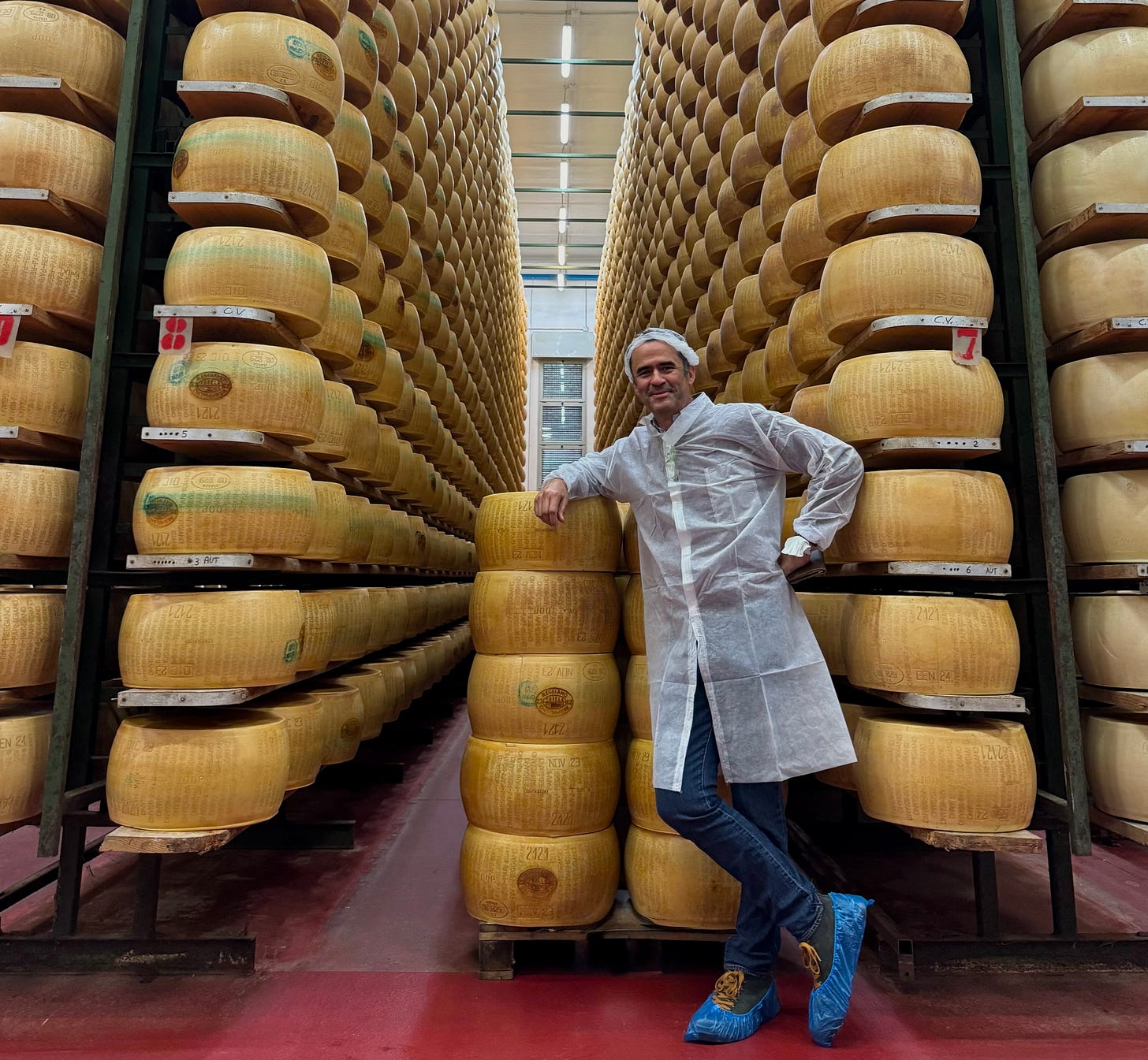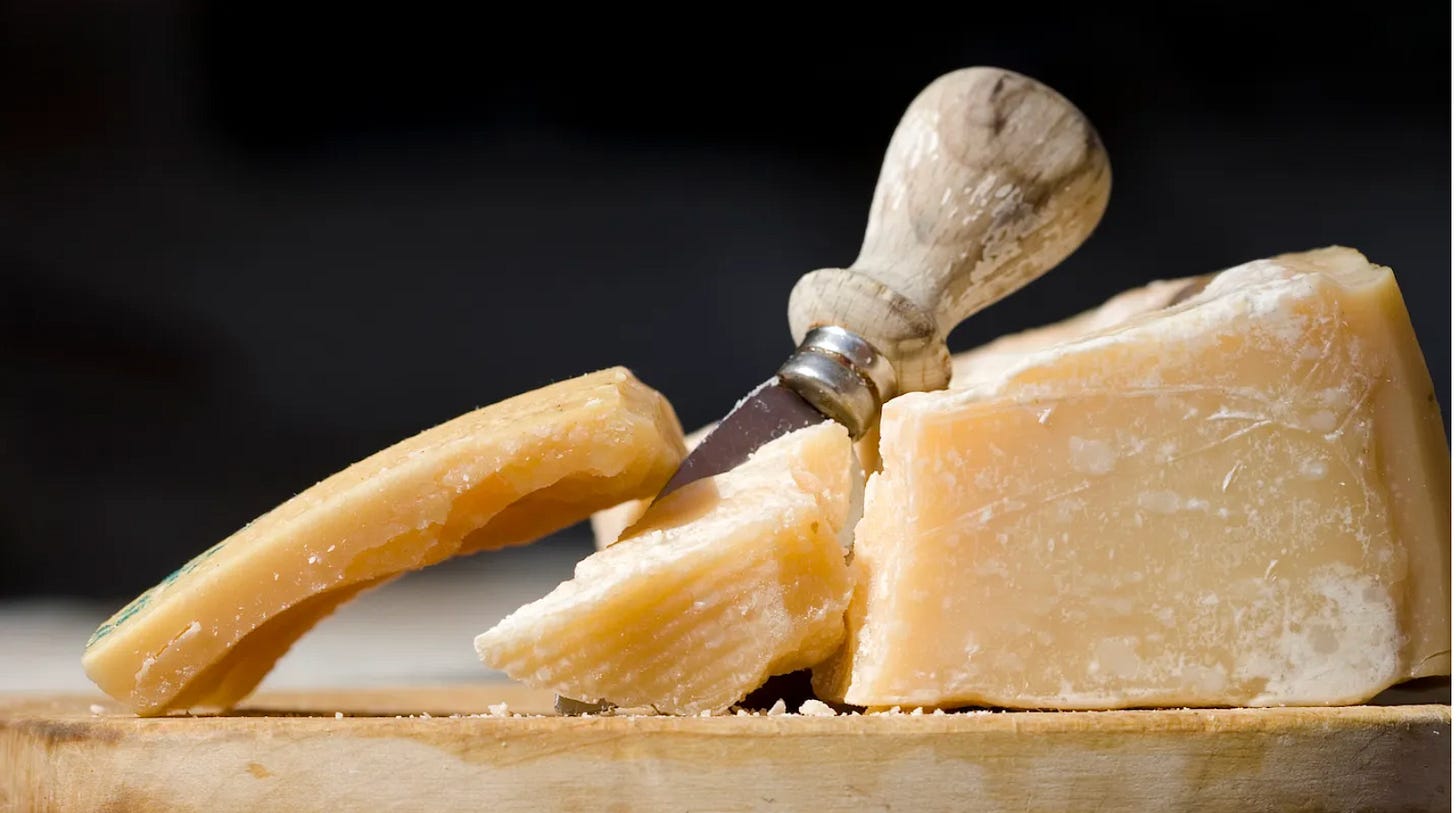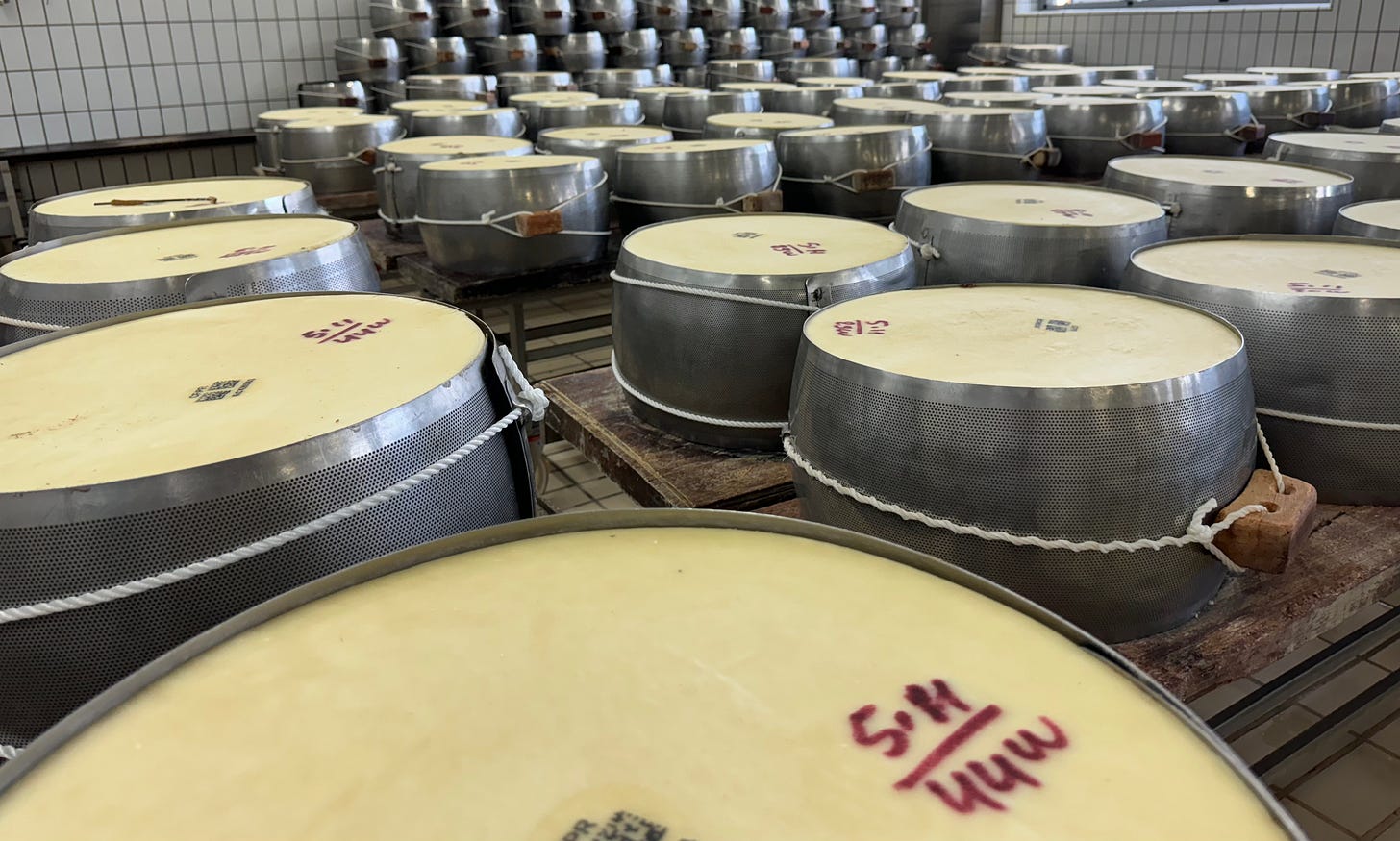✍️ Dispatch: A Cathedral of Cheese
My pilgrimage to the soul of Parmigiano-Reggiano
Parmesan was the first cheese I ever craved.
I know now that what I ate in my youth was dusty and industrial: a distant cousin of the real thing. It was pre-grated and sold in a bright green shaker. But I couldn’t get enough of it. As a kid, I’d pour it onto the palm of my hand and then lick it off. I was teased for shaking it onto almost anything savory: hot dogs, fried chicken, rice, scrambled eggs, popcorn.
Fast-forward a few decades.
I’ve long since learned to love -- not just crave -- real Parmigiano-Reggiano. And even as a middle-aged man with little patience for ceremony, I still treat this cheese with a kind of ritual respect. I never slice it; I break it into small, uneven shards. It’s stored in my refrigerator neatly folded into a cloth towel, which is then placed inside a plastic bag.
All of which helps explain why, on a recent trip to Emilia-Romagna, my first-ever stop in a caseificio felt like a pilgrimage.
The smell was the first thing I noticed when I walked through the doors: warm, nutty, sweet. There was a slight tang that lingered in the back of my nose.
Everything there moved with quiet precision. It was part industrial, part monastic. The partially skimmed milk from the evening is mixed with the whole milk from the following morning, cooked until it starts to solidify, then drained and placed to dry out in molds with the perforations that form the familiar “Parmigiano-Reggiano” lettering in the rind, which turns a kind of mustard color as it ages.
The ageing takes at least 12 months, though 24 is the standard minimum -- the Classico. At 36 months it’s called Vecchio (Old) and at 48, it’s Stravecchio (Extra-old). The oldest I’ve ever tasted was from a small batch aged for 60 months.
There’s no official name for 60-month-old Parmigiano-Reggiano. I’ve read the term Extra-Stravecchio (Extra-extra old) in Italian publications, but cheesemonger who gave me the dense, amber-colored, textured shard simply called it “60 mesi.”
At 12 months Parmigiano-Reggiano -- it’s referred to as fresco (fresh) -- is soft and mild, a little chewy and fairly bland. It needs to be paired with something like fruit preserves or figs or honey to become interesting.
Starting at 24 months, though, the cheese becomes increasingly crumbly and intense. The Classico is what I use for cooking, while I’ll have the Vecchio and Stravecchio on their own. At 36 months, the cheese is a near-perfect pairing for an array of wines: big, structured reds like Barbaresco or Brunello, sparkling wines from Franciacorta, aged whites like Fiano di Avellino, or even a sweet Vin Santo or Marsala. I’d go for the aged versions of most of the same wines with the Stravecchio.
But the 60 mesi? It was a lot to take in. Puncturing the surface of it made it shatter rather than crumble, and you can smell it from across a room.
I’ve only had it once, but in my memory, it was so intense -- umami, caramel, toasted nuts, tobacco -- I wouldn’t know what to pair it with. Maybe a good whiskey? Old port? If anyone has insights on this, please mention them in the comments.
The point is, there’s no shortcut. The recipe for Parmigiano-Reggiano is basically milk, a little salt, and a lot of time. But like most of the best of what this country has to offer, it’s worth the wait.
This is the first Dispatch post in the newsletter. These shorter pieces will appear every other Tuesday, in the weeks between the long-form features that have been published until now. Think of the Dispatch posts as snapshots with context: glimpses of places, traditions, curiosities, or reflections that still aim to shed light on Italy beyond the usual stereotypes.
Let me know what you think of the new Notebook format in the comments!






I first came across Parmesan shakers when I went to university in the UK, and they always smelled like vomit to me - my family in London always brings cheddar from the uk and goes home with their suitcases full of parmigiano.
Loved learning about the different types - my main character flaw (I’m told) is that I don’t like cheese although I love cheesy things, so I’m mainly a consumer of Parmesan on pasta, or maybe with bresaola and rughetta, but I love how kids here are given it as a snack.
Oh that green canister! We had no idea what we were missing.